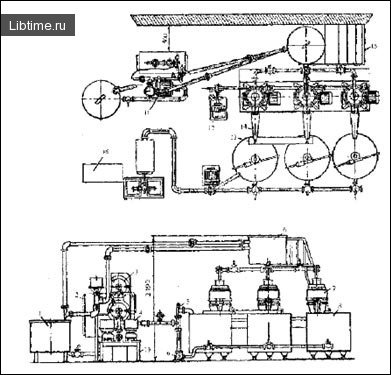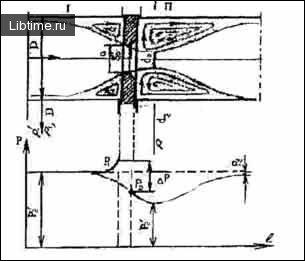Seaming machines
Automatic and semi-automatic seaming machines for metal and glass jars are used to seal product cans. The following types of sealing machines are available for canning production:
- ZK1 - automatic for glass containers;
- ZK2 - automatic vacuum machines for glass containers;
- ZKZ - automatic for glass containers for aggregation with filler;
- ZK4 - semi-automatic for glass containers;
- ZK5 - automatic for filling metal and combined containers;
- ZK7 - automatic for cylindrical metal containers for aggregation; with filler;
- ZK8 - semi-automatic for filling metal and combined containers.

The designation of a can sealing machine consists of its type, nominal container volume (in liters) and nominal capacity (in cans per minute).
For example, the size ZK2-1-125 means that it is an automatic vacuum sealing machine for sealing glass jars with a volume of up to 1 liter and a capacity of 125 jars per minute.
Semi-automatic sealing machines ZK4-3-16, ZK4-10-12, B4-KZK-77, B4-KZK-77-01 (Fig. 1) are designed for sealing glass containers with a volume of up to 3 and 10 liters; semi-automatic sealing machines ZK8-5-16, ZK8-10-12 (according to the design documentation, respectively, B4-KZK-77-02, P4-KZK-77-03) are designed for sealing metal containers with a volume of up to 5 and 10 liters. 
When the pedal is pressed, a single-rotation clutch is activated, and the closing head makes eleven revolutions. The can with the lid on it is lifted up to the closing head and sealed. The lower chuck with the sealed can is lowered, after which the can is removed manually.
Automatic closing machines ZK5-1-250 and ZK5-5-63 are automatic machines designed for closing, labeling, accounting of filled cylindrical metal and combined containers and their delivery to a fixed table. The components of the ZK-1-125 machine are a frame, a receiving mechanism, a feeding mechanism, a rolling carousel, an ejection mechanism, a control panel, a speed box and power equipment. The 3K-5-63 rolling machine has a similar design, which is a continuous carousel type automatic machine.
The principle of operation of the ZK5-1-250 and ZK5-5-63 canning machines is the same. The filled cans are fed to the receiving mechanism. On the conveyor, as the can passes through the screw, the locking lever is pushed by the can, after which the mechanism ejects the lid, which is marked and then the can is fed to the closing carousel. Here, the lid is placed on the can, the can with the lid is placed in the chuck of the rolling mechanism and rolled up. The can is removed from the lower chuck and ejected from the machine by the ejector sprocket.
To form a correct and airtight double seam on machines of any design, it is necessary for the rollers of the first operation to make 5-7 and the rollers of the second operation 3-5 turns along the seam. Shaped or rectangular cans are rolled up on machines in which the rollers of the first and second operations move along a guide depending on the shape of the can.


